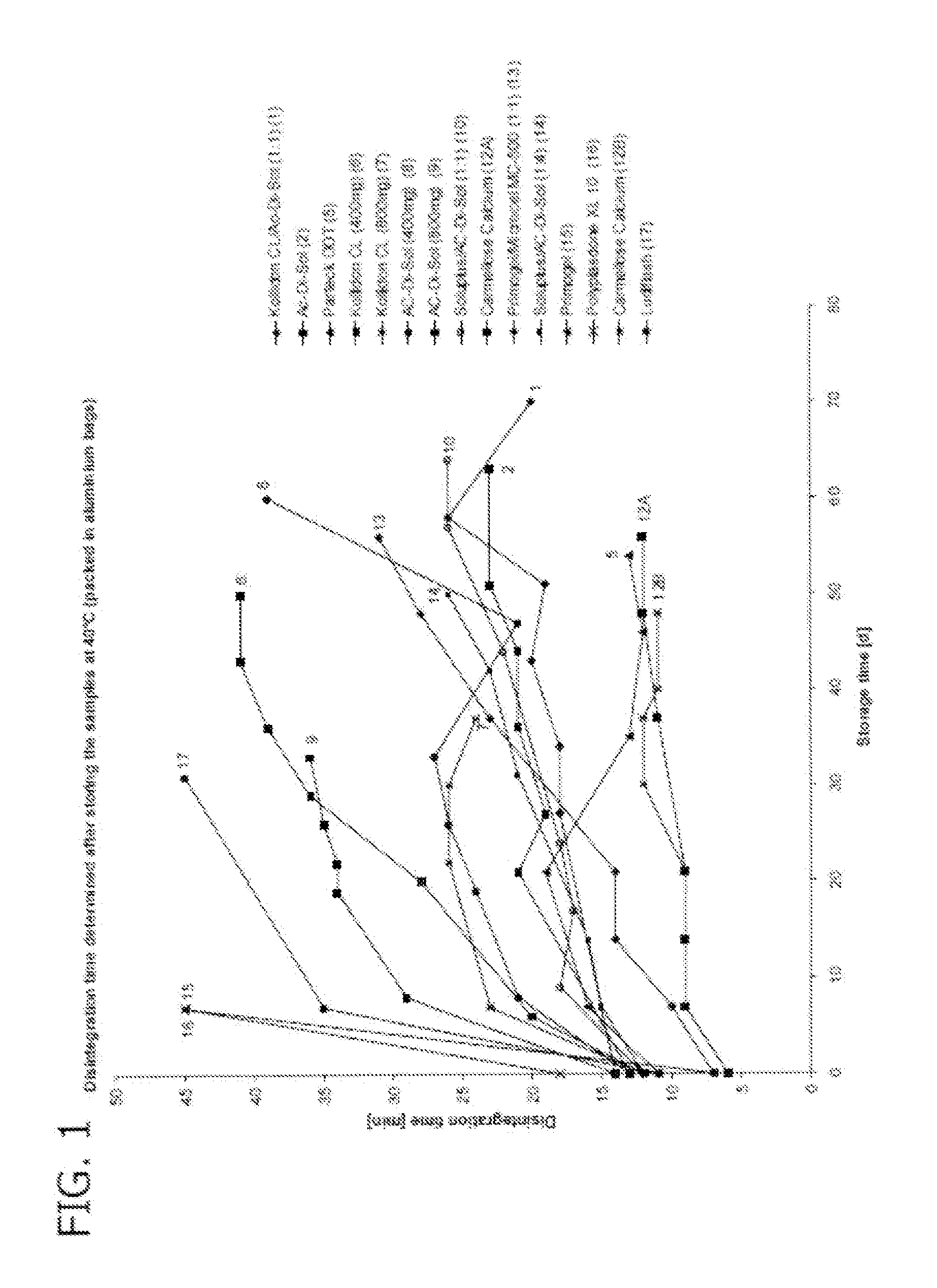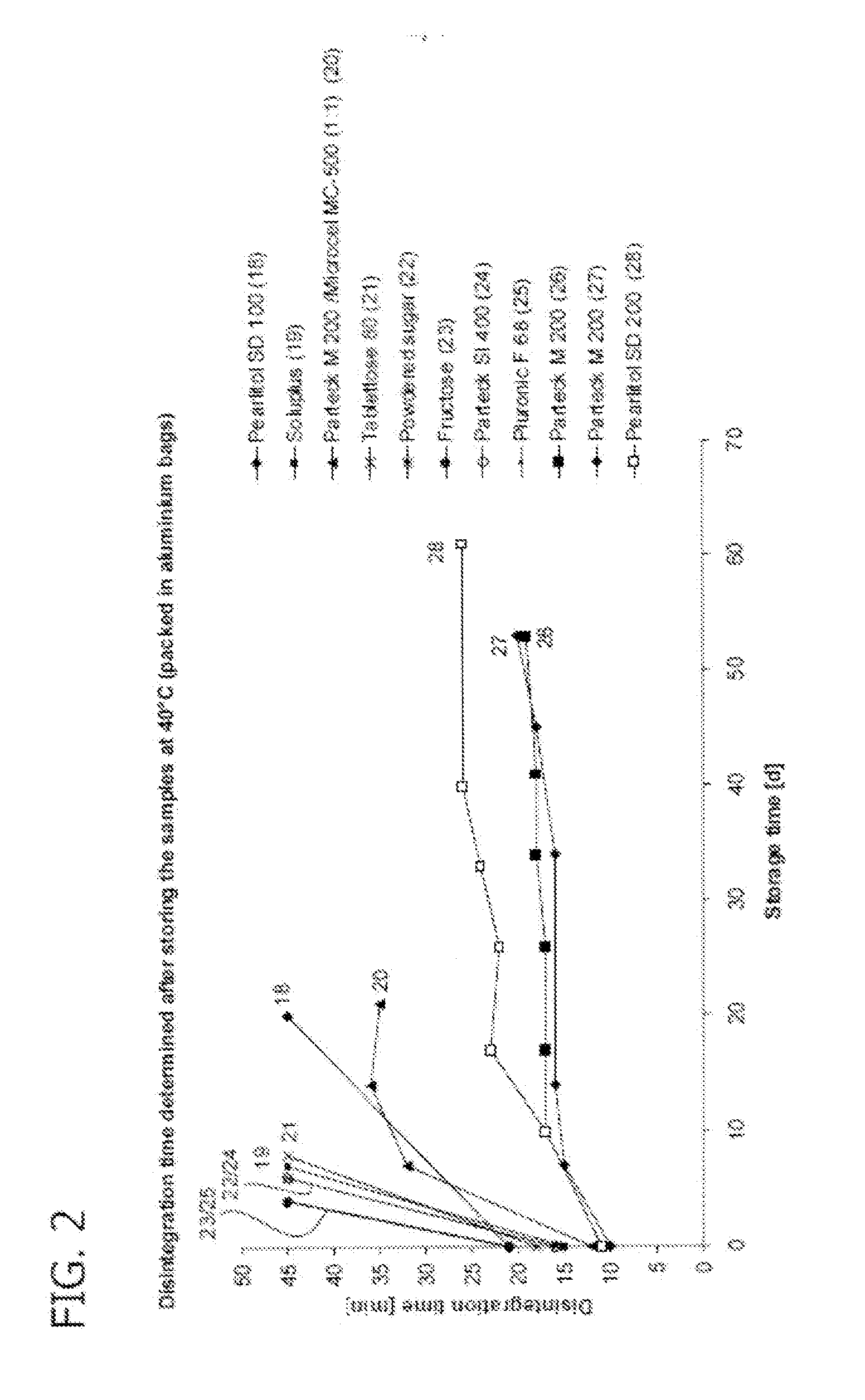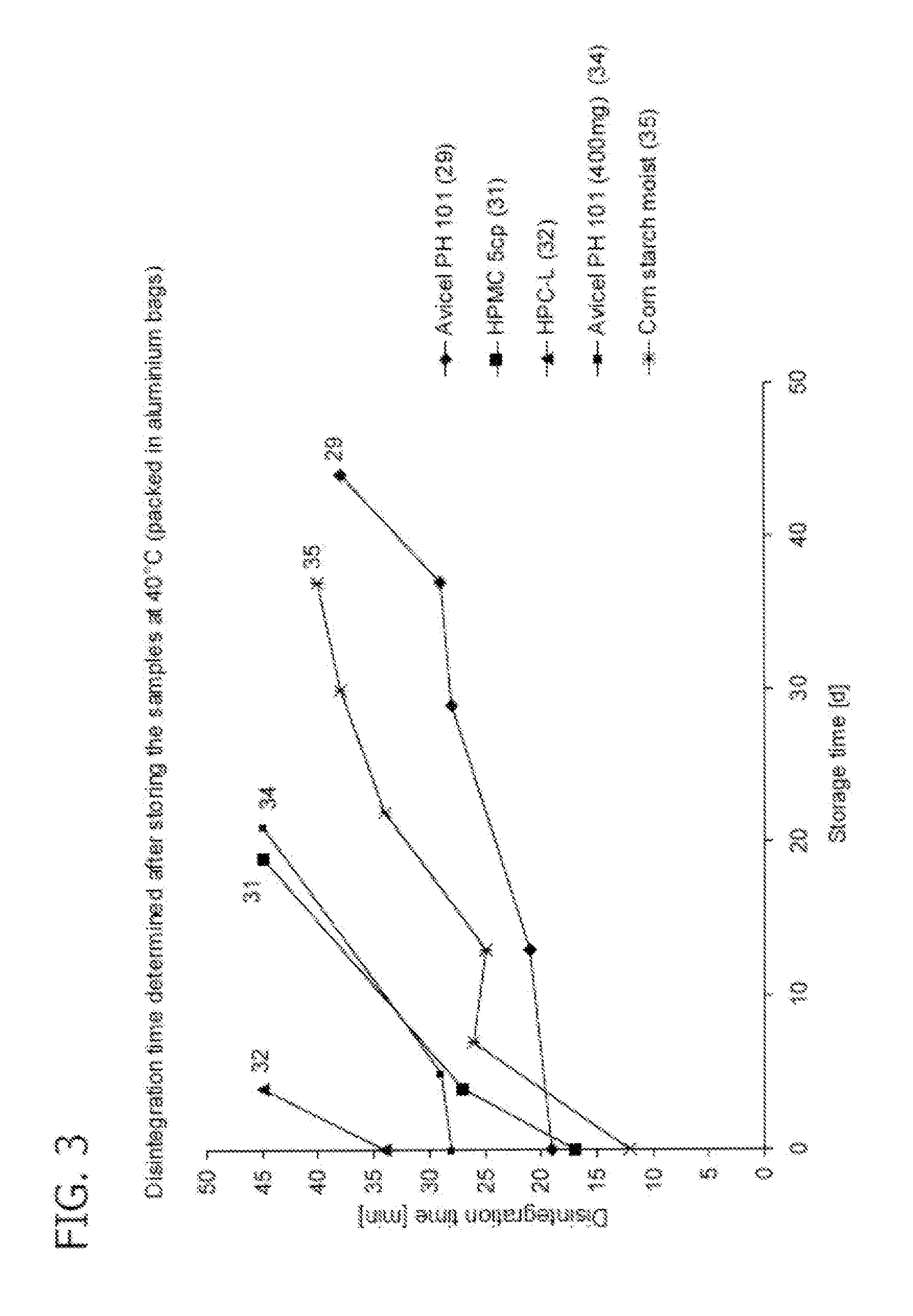Non-Starch Based Soft Chewables
a non-starch-based, soft chewable technology, applied in the field of soft chewables, can solve the problems of inhibiting the dissolution of active ingredients, unsuitable thermolabile drugs, and unsuitable processing, and achieve the effect of reducing the moisture content of soft chewables
- Summary
- Abstract
- Description
- Claims
- Application Information
AI Technical Summary
Benefits of technology
Problems solved by technology
Method used
Image
Examples
example 1
[0178]In this example, soft chewable treats comprising various active ingredients and disintegrants were prepared and disintegration times were measured in accordance with the standardized test protocol.
[0179]Active ingredients (1) praziquantel (2)pyrantel embonate, and (3) febantel (microfine) were mixed homogeneously with pork liver powder, a disfinfegrant, any preservatives, and any antioxidants in the proportions shown on Tables 1-3 in a mixer at room temperature (20 ° C. to 25° C.) without applying any heat. Granulation fluid consisting of glycerin, purified water. Povidone 25, sodium saccharin, sodium laurylsulfate in the proportions shown on Tables 1-3 was added slowly to the mixer (e.g.. a low-shear planetary mixer, available from Kenwood) and mixed for a short time (approximately 1-2 min) until a wet homogeneous dough was formed. The dough was then spread as a sheet by passing through a lab scale machine (e.g., a Haussler L30 dough spreading machine).
[0180]Soft chewable tre...
PUM
| Property | Measurement | Unit |
|---|---|---|
| temperature | aaaaa | aaaaa |
| temperature | aaaaa | aaaaa |
| temperature | aaaaa | aaaaa |
Abstract
Description
Claims
Application Information
 Login to View More
Login to View More - R&D
- Intellectual Property
- Life Sciences
- Materials
- Tech Scout
- Unparalleled Data Quality
- Higher Quality Content
- 60% Fewer Hallucinations
Browse by: Latest US Patents, China's latest patents, Technical Efficacy Thesaurus, Application Domain, Technology Topic, Popular Technical Reports.
© 2025 PatSnap. All rights reserved.Legal|Privacy policy|Modern Slavery Act Transparency Statement|Sitemap|About US| Contact US: help@patsnap.com



